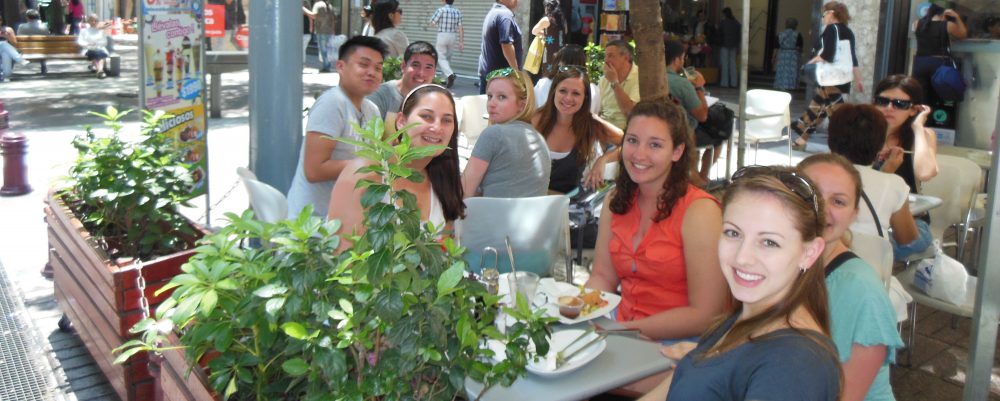On Sunday afternoon, a few day prior to our departure, we visited the Museum of Memory and Human Rights, that illustrates the attempts against life and dignity against Chileans from 1973 to 1990. Whiling touring the museum we were filled with emotions of sadness, anger, fear, and sympathy for these innocent people. The museum depicted the 3185 executions and disappearances that were related to the new found dictatorship and political unrest.
One of the early exhibits that we saw was large a map of Chile made of stone lying on the ground. Throughout this stone were many markers with pictures of current memorials to honor and remember the people affected by violation of human rights. It was shocking to learn and visualize that human torture and political imprisonment took place throughout all of Chile, not just in one area.
We learned about the history of Chile while touring the museum. On September 11, 1973 La Moneda palace was surrounded by soldiers, tanks, and helicopters as the Military demands President Salvador Allende’s resignation. With President Allende the military opens fire and many people die or are captured and disappear forever. President Allende was found dead and the Military Junta takes over control of the country. It’s interesting that 9/11 is a significant day in other countries as well.
The new Government Junta, a dictatorship, sets new laws in which strict curfews were implemented for the Chilean citizens, the approval of the death penalty, closing of Congress, and prohibition of all political parties. Civil liberties were restrained under this new government, and fear among Chileans grew as persecution, torture, assassinations, and covert burials increased. There were exhibits about the use of electrocuting beds, drowning related to cement blocks being attached to people, and shootings just as a few examples. It is unbelievable what people went through. Additionally, thousands of Chilleans were kidnapped, exiled, or expelled from the country. A quote from a relative of a disappeared detainee states, ‘It’s terrible when somebody is executed, but you see it happen. You can bury him or her, take flowers to the grave and be in mourning. But in the case of those arrested and disappeared you don’t know where he is, you don’t know what happened to him, whether he is cold, hungry or if he’s really dead. This is something for the entire family to go mad.’ Thinking about this quote, one can only imagine how devastating it must have been for a loved one to just disappear and know nothing.
Age was not a factor, as thousands of children observed their parents being kidnapped and tortured, or their homes being searched. Many children were forced into exile and hundreds were tortured, assassinated, or disappeared. One of the exhibits was pictures and quotes by the Chillean children during this horrible time. Art therapy (a form of therapy we have used during our psychiatric nursing rotations at home and observed here in Chile), was used to help the children express their feelings. Some of the pictures showed fighting between the military and residents, people being taken away by the military, and people behind bars. There were pictures of cemeteries, and people caring for those injured. The faces on the pictures showed fear and sadness with tears. There were no happy pictures displayed in the exhibit.
The Military dictatorship lasted 17 years. During that time the Chilleans did all that they could in terms of protesting to restore peace and human rights. Other nations and human rights originations became involved in the fight over time, and helped expose what was occurring in Chile.
The most memorable exhibit is a mural that is 3 stories high and the length of a very long wall that displays photos of the victims who did not survive the dictatorship. Throughout the display are empty frames for additional photos to be added and account for those still missing. There were electric candles placed as a vigil to help remember and denounce the loss of these people. It was mind-blowing to learn that something like this happened for so many years, and for us to be in college and just learning about it now. Reading some of these peoples stories and quotes, and watching short movie documentaries was heartbreaking. Words cannot describe how we felt.
~Sara and Mariah
